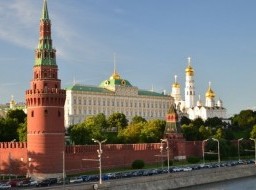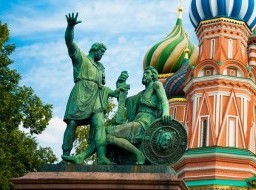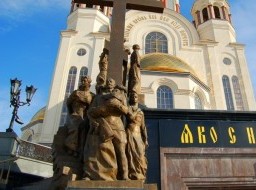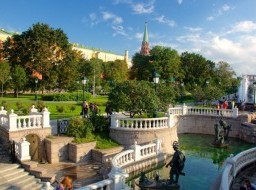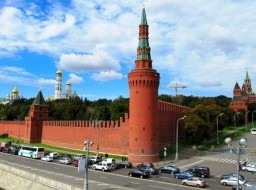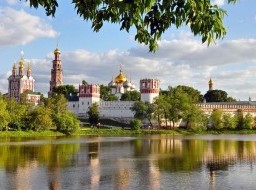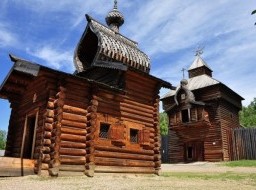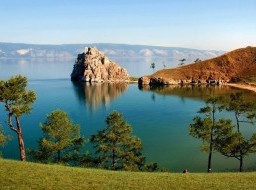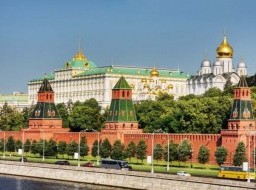Bogd Khan Winter Palace
The Winter Palace of Bogd Khaan - one of the first museums in Mongolia - was built in 1924. It used to be a winter residence of the last Bogd Khaan of Mongolia, Javzandamba. The palace compound was built between 1893 and 1903, and is well known for it's Gate of Peace, Temple and personal library of Bogd Khaan. Among the museum's exhibits are sculptures by Mongolia's first Bogd Khaan Zanabazar, the famous Taras. The museum has 21 invaluable sculptures of Taras. The collection at the Palace Museum numbers over 8,000 exhibits, of these 72 are certified by the State as unique but others are priceless artifacts.The museum welcomes 19-20 thousand visitors each year and 70-80 percent are from foreign countries. This is the only remaining palace out of four residences where Bogd Khaan, the last Mongolian ruler, resided. This palace now displays the collection of personal belongings of the last Khaan and his wife. The museum offers a wide variety of Buddhist arts. Special attention attracts paintings by Marzan Sharav depicting with a slice of humor and irony scenes from the everyday life of Mongols in the turn of this century. The Bogd Khaan Palace Museum comprises of two parts, which are the summer palace with seven temples and pagodas and the winter palace, a two story, white construction built in a European architectural style. There are mostly ancient statues of gods in the summer palace. Hence every year two great religious rituals are used here and staged to worship the sky and water spirits. There is also a tent decorated with sculptures of birds, animals and horseman. In the winter palace, built as a project by architects of Tsarist Russia (1893-1903), the Bogd Khaan along with his queen, Dondogdulam Khatan (1874-1923) spent the wintertime for 20 years. The palace has a ger and carriage, as well as clothes and articles that belonged to the Khaan, revealing where and how the Last Khaan of Mongolia lived, what he was interested in and what he did, as well as what he wore and used. There are six temples in the grounds. The white building to the right as you enter is the Winter Palace itself. It contains a collection of gifts received from foreign dignitaries, such as a pair of golden boots from a Russian tsar, a robe made from 80 unfortunate foxes and a ger lined with the skins of 150 snow leopards (ask the curator to open the ger for you). The Bogd Khaan's penchant for unusual live animals explains the extraordinary array of stuffed animals in the Palace - including an elephant that had to walk for three months from the Russian border to Ulaanbaatar! The Palace Museum preserves priceless historical and cultural monuments of the Mongolian State and religion from the 17th to 20th Centuries, together with artifacts created by the foremost masters of that time, Zanabazar in particular, ranging from statues of gods, tankas, and papier-mache. For example, there is a mantle (lama's) made of black fox fur that was presented to the first Bogd Zanabazar by the Manchurian King Enkh-Amgalan. The fur mantle is made of 80 fox skins and, by removing spinal parts of the skins, is seen to be adorned with 61 pieces of coral flower and 800 pieces of pearl. Its length is 186cm and the width of its skirt is 7 meters. Bogd Khaan also had a jacket made of yellow brocade and decorated with pearl patterns in which about 22,000 small pearls have been used. Besides this, it is worthy of mention that there is a hat, made from the leaves of a sandal tree that had been presented to the Bogd Khaan by Dalai Lama V and a chair presented by Russian Tsar Nikolai II. In its time, the chair used to play music when someone sat on it. The museum preserves the crown of the Bogd Khaan, a music box, silver articles, various stuffed animals, a carriage, silver saddle, and many other priceless and unique items. The Winter Palace, a few kilometers south of the Square on Chingisiin Orgon Choloo, is open daily in summer from 10 a.m. to 5 p.m. In winter it is closed on Wednesday and Thursday. A little pamphlet, available at the entrance, gives a very brief explanation of the temples in English, and includes a handy map showing the temple locations. PALACE MUSEUM RESTORATION The Bogd Khaan Palace Museum, the foundation of which was laid in 1924, opened in 1926. It is a construction built in an oriental architectural style. In the course of a period of one century, the Palace Museum underwent several restorations. However, during the last 40 years, it was not properly reconstructed and, since 2002, extensive restoration work has been ongoing at the museum. The first work is to repair the library temple, with donations from the World Monuments Fund headquartered in the United States. Between 2002 and 2003, restoration work valued at USD 60 thousand was performed successfully. Financed by non-refundable cultural aid rendered by the Government of China, the gates guarding the museum were reconstructed 2007. In 2002 and 2003, the museum enriched its collection with some 300 photographs depicting the history ofMongolia under the rule of Bogd Khaan, on the basis of research conducted throughout all the archives operating within the territory of Mongolia. The museum personnel stages exhibitions in two provinces of Mongolia every year. Furthermore thanks to technical modernization carried out since 2001, exhibitions have been hosted in Germany, Austria, Turkey and Hungary. All this has created an opportunity for the historical monument that once served as the Green Palace of Bogd Khaan, with its priceless historical and cultural artifacts, to be inherited by the next generation. It is also planned to build an exhibition hall and a treasury house meeting international safety standards that will facilitate the display of all exhibits to the public. INTERESTING STORY People still talk about the 1960 flood that caused devastating damage during the last 100-year history of Mongolia. The flood took place in July, during the Naadam festival and covered huge areas from the Bayangol Hotel through to the Peace Bridge, flooding the ground floors of apartment areas, industrial districts and destroying a large number of objects. Only the Bogd Khaan Palace Museum located in this area was not flooded, astonishing the people. It is interesting that this huge flood passed by the un-elevated location of the museum, leaving it totally dry. Some people explain this as being the right location, chosen with the help of astrology. Others explain this with a religious point of view, saying that a strong charm was put in place at the Bogd Khaan Palace by strong lamas of that time. There is no other explanation for this happening. |

